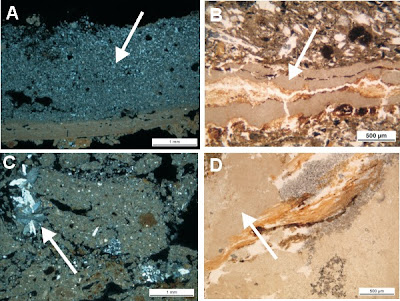Investigations at the Ness of Brodgar Days 4 and 5

Ben Chan discusses this week's progress on the site tour This week has gone by so quickly, but we have managed to collect some great sets of samples, more than we can get made into slides at the moment! The first lot have already been sent off to Earthslides to get made into thin sections. An important lesson from the field - if you get over enthusiastic about collecting blocks of soil that weigh >1kg each, they will not fit in your luggage and will incur hefty postage fees. And lesson 2, blocks of soil wrapped in tissue and tape look very odd on the airport X ray and your bags will likely be searched. I ended up taking about 20 block samples in all, and spent much of my last day in Orkney panicking about how to transport them back. Friday was my last day on site, and the day started with a site tour with each supervisor summarising what has been going on in the building/trench that week. A week is just not long enough to get my head around everything going on at the Nes



